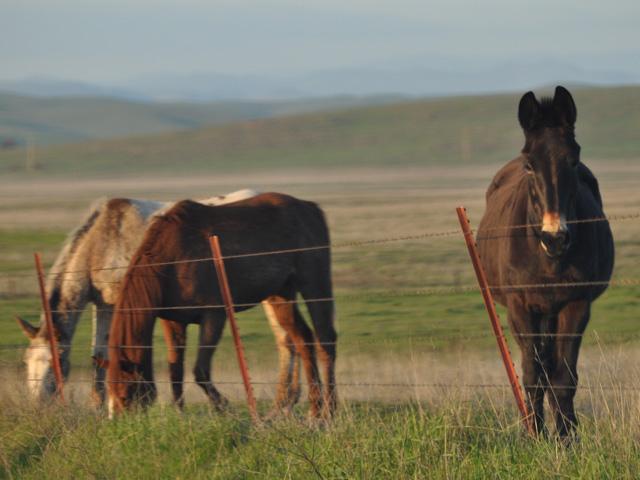Ask the Vet
Treat Founder Promptly, Manage for Prevention
READER QUESTION:
We have two donkeys we let run with our cow herd to protect them from dogs and other predators. We had a lot of rain this past spring and summer, and we have had plenty of grass. When we got our cattle up to wean calves, one of the donkeys had a foot that was very long and turned up. She was lame when on concrete. What is going on with her?
DR. MCMILLAN'S ANSWER:
I cannot know for certain without looking at her, but I suspect she has founder. Founder or laminitis is an extremely painful condition of the hooves, and it can happen in any hooved animal. It is commonly associated with excessive feeding of grains or feed concentrates, but I have seen horses and cattle founder on grass.
P[L1] D[0x0] M[300x250] OOP[F] ADUNIT[] T[]
Founder is caused by the consumption of high levels of simple sugars and other easily digested carbohydrates. These are broken down in the digestive system into a substance that leads to inflammation of the "laminae," which is the sensitive soft tissue structure inside the hoof that joins the coffin bone to the hoof wall.
In severe cases, this inflammation weakens the attachment of the hoof to the coffin bone, and the strong pull of the flexor tendons causes the bone to rotate away from the hoof. In the most severe cases, the coffin bone can even penetrate through the sole of the foot.
Animals with laminitis will have a sawhorse stance, appear dull, be reluctant to move or even refuse to get up. The feet will often have a throbbing pulse. If they have had repeated episodes, they may develop raised parallel areas called laminitic rings on the hooves.
Early treatment is important to prevent more severe damage. Call your veterinarian as soon as you notice a problem. They will probably prescribe pain medications and possibly anti-inflammatories to help improve circulation to the feet. Animals should be kept on a soft surface and their movement restricted. If hooves are long, at some point, your farrier needs to trim them back. More severe cases may need special shoes or sole pads. Sadly, some animals may have to be put down.
Prevention should focus on routine hoof trimming, weight management and limited access time on lush pastures.
**
Editor's Note:
Please contact your veterinarian with questions pertaining to the health of your herd or other animals. Every operation is unique, and the information in this column does not pertain to all situations. This is not intended as medical advice but is purely for informational purposes.
Write Dr. Ken McMillan at Ask the Vet, 2204 Lakeshore Dr., Suite 415, Birmingham, AL 35209, or email vet@progressivefarmer.com.
(c) Copyright 2022 DTN, LLC. All rights reserved.






